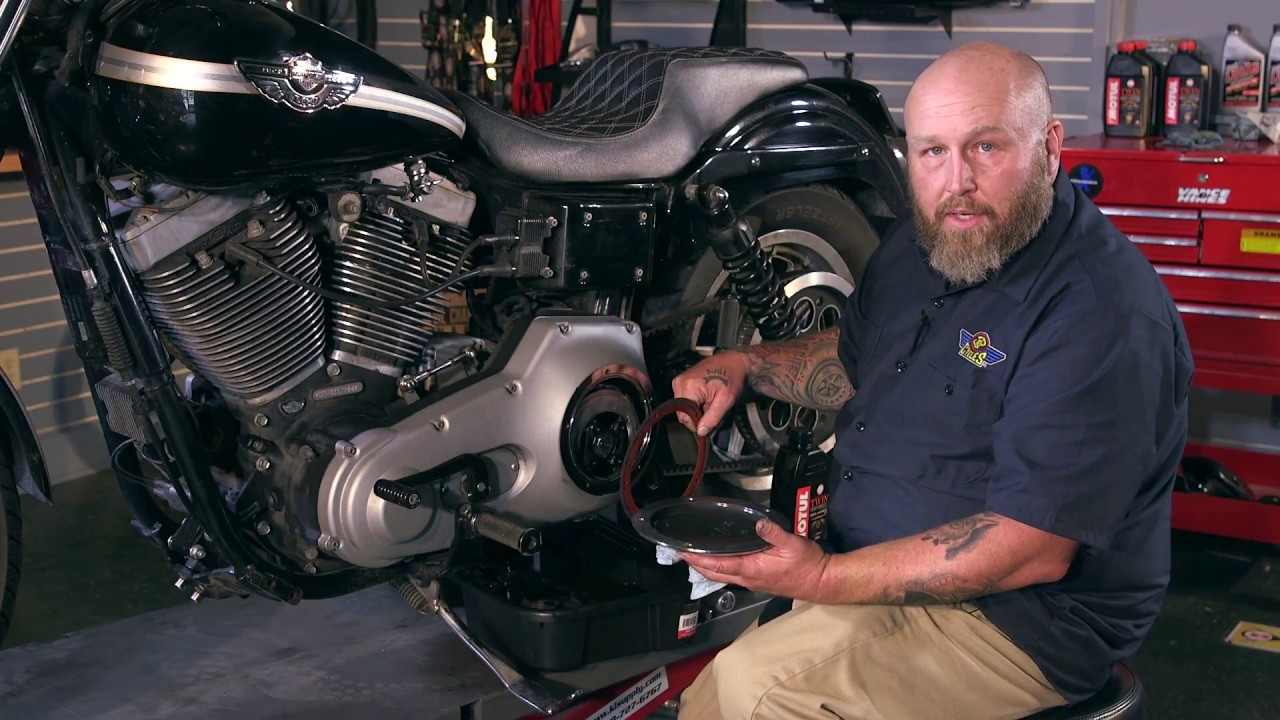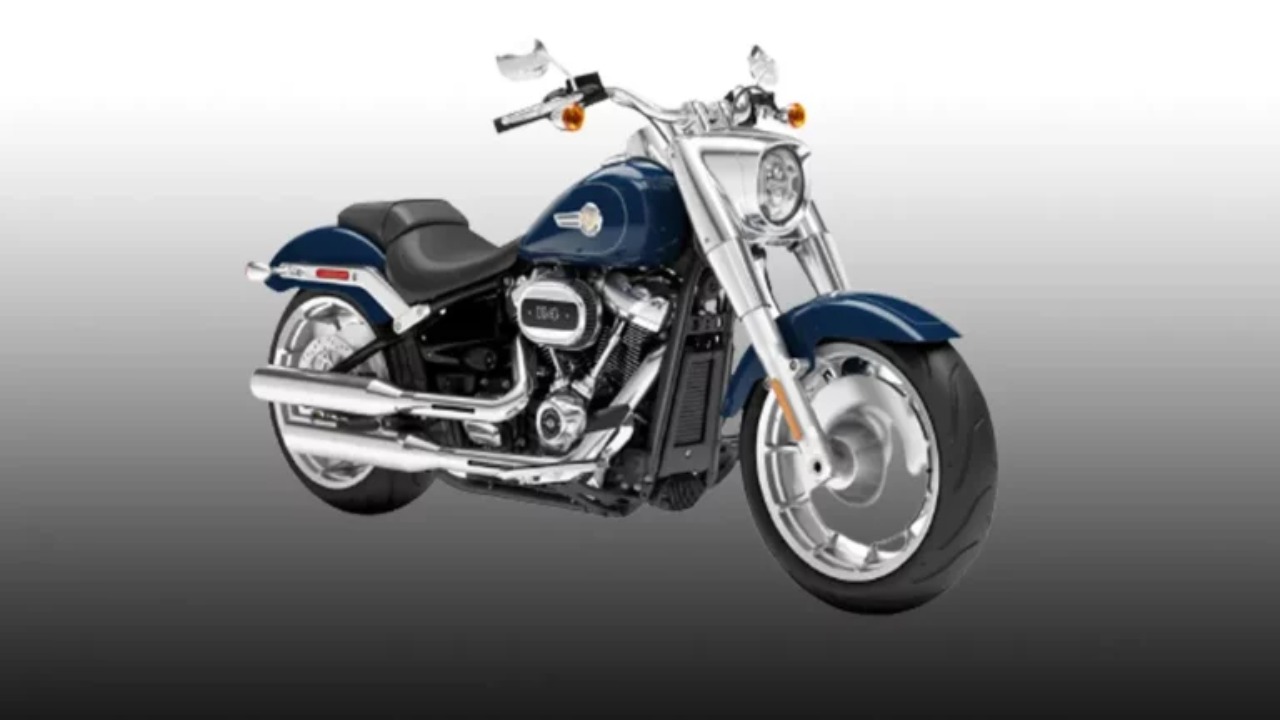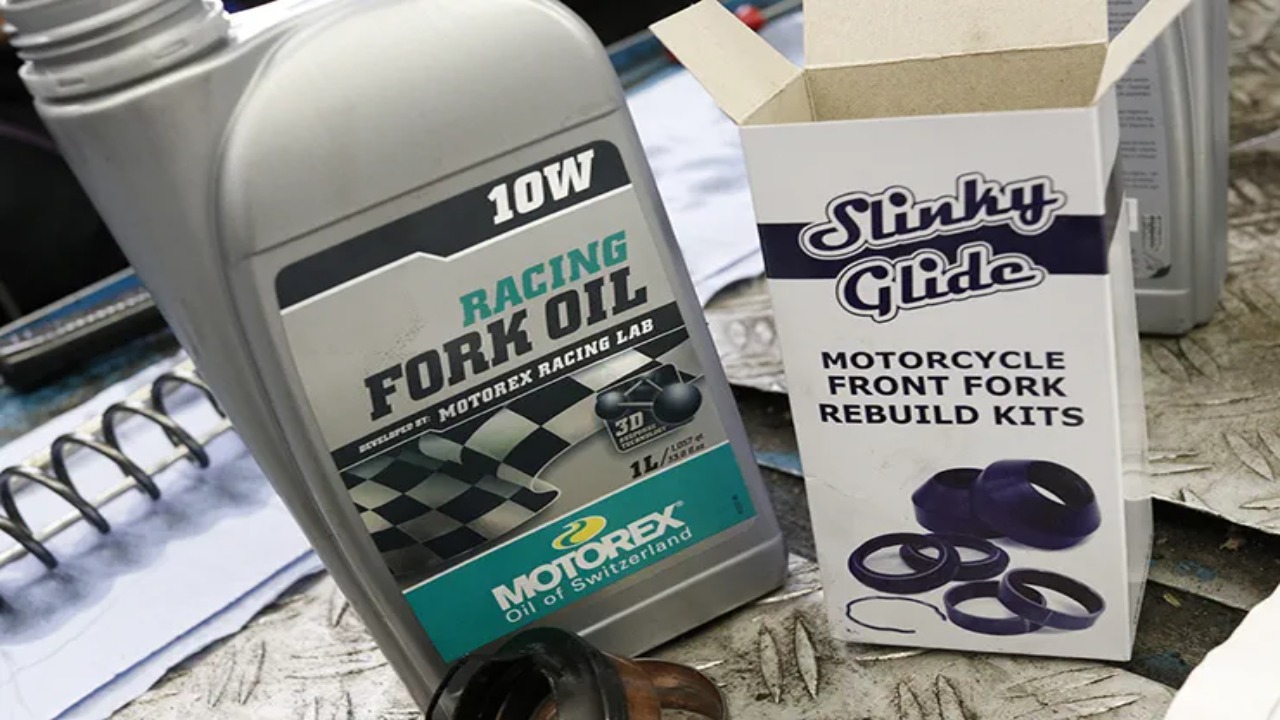Harley-Davidson has been an iconic brand in the world of motorcycles for over a century. Known for its powerful engines and classic designs, Harley-Davidson motorcycles have a devoted following of riders.
As with any vehicle, regular maintenance is crucial for optimal performance and longevity. One essential aspect of maintenance for Harley-Davidson motorcycles is ensuring proper fork fluid oil levels. The forks on a motorcycle play a crucial role in providing stability, control, and comfort while riding.
Here, we will take the Harley Fork oil capacity chart and show how to use it effectively. Understanding the fork oil capacity chart will help keep your motorcycle running smoothly and ensure a safe and enjoyable riding experience, whether you are a seasoned rider or a new Harley owner.

Harley Fork Oil Capacity Chart – Explanation

Maintaining and servicing your Harley-Davidson motorcycle, having accurate information is essential. One crucial aspect to consider is the fork oil capacity, as it directly impacts the performance and safety of your bike’s suspension system. The Harley-Fork oil capacity chart is a valuable resource that provides riders with the necessary details to ensure optimal fork oil levels. Here is their Harley Fork oil capacity chart:
|
Model |
Year |
Wet (Oz.) |
Dry (Oz.) |
|
Sportster |
Till 1972 |
5.5 |
6.5 |
|
Sportster |
1972-83 |
5.0 |
6.0 |
|
Sportster |
1984-87 |
5.4 |
6.5 |
|
Sportster |
1988-2003 |
9.0 |
10.2 |
|
Sportster |
2004-08 |
10.5 |
11.6 |
|
Sportster XL 883 Hugger |
Till 1991 |
9.0 |
10.2 |
|
Sportster XL 883 Hugger |
1992-99 |
10.7 |
12.1 |
|
FL/FLH |
1948-77 |
6.5 |
7.0 |
|
FL/FLH |
1977-84 |
7.75 |
8.5 |
|
FLT |
1980-97 |
7.75 |
8.5 |
|
FLT |
1998-2001 |
8.7 |
9.7 |
|
FLHR |
2002-09 |
10.1 |
11.1 |
|
FX/FXE |
1972 |
5.5 |
6.5 |
|
FX/FXE |
1973-83 |
5.0 |
6.0 |
|
FXR/FXRS |
1985-86 |
6.0 |
7.0 |
|
FXR/FXRS |
1991-94 |
9.0 |
10.2 |
|
Dyna/Low Rider |
1991-2005 |
9.2 |
10.2 |
|
Dyna Wide Glide |
1991-2005 |
10.2 |
11.2 |
|
FXWG/FXST |
1980-84 |
9.0 |
10.2 |
|
FXWG/FXST |
1985-2006 |
10.2 |
11.2 |
|
FLST |
1986-2006 |
11.5 |
12.5 |
|
FLST |
2007-09 |
12.4 |
13.4 |
|
FXST |
2007-09 |
11.5 |
12.5 |
|
FXSTD |
2007 |
10.5 |
11.6 |
Explanatory Ideas Of The Chart
The above chart has two different types of measurement (wet and dry). You may need different quantities of fork wells during wet and dry conditions. However, wet refers to the full drain fork service oil of the oil out of the plug. And you need a refill for it. Alternatively, dry represents taking the forks to bits and cleaning them dry from inside to outside. You can see that dry forks require 0.5-1.0 oz—more than wet forks.
Harley’s 49mm fork oil capacity is more than 24 fl. ounces. Also, Harley’s 41mm alternative fork oils oil capacity is 11.8 ounces. These are the most asked queries available on the web. As you see from the listings, people are concerned about the oil capacity of the fork, which depends on its size. However, the relation between the fork size and its oil capacity isn’t linear. That’s why looking at the Harley fork oil capacity becomes even more crucial.
The Importance Of Harley Fork Oil Capacity Chart

Motorcycle fork oil is one of the most important fluids in your motorcycle. It keeps your forks lubricated and working correctly. Thus, the fork oil can break down and become less effective over time. That’s why you should change your fork oil regularly.
But how often should you change your fork chart oil? It depends on how often you ride your Harley and your conditions. When you ride in dusty or muddy conditions, you should often change your fork oil. The same goes for riding frequently or putting many miles on your bike.
How To Use The Harley Fork Oil Capacity Chart

One essential aspect of proper maintenance is understanding the recommended oil capacity for your Harley’s forks. The Harley-Fork oil capacity chart is a valuable resource that provides detailed information on the appropriate amount of fork oil needed for various Harley-Davidson models. Here is some information on how to use the Harley-Fork oil capacity chart:
- Locate The Chart: The Harley-Fork oil capacity chart can usually be found in the owner’s manual of your Harley Davidson motorcycle. If you don’t have the manual, search for it online on the official Harley Davidson website or other reliable sources.
- Identify Your Motorcycle: The chart will contain information about different Harley Davidson models and years. Identify your motorcycle model and year accurately to ensure the correct information.
- Determine The Fork Oil Capacity: Look for the column or section in the chart corresponding to your motorcycle model and year. This will provide the recommended fork oil capacity for your front forks. The capacity is usually indicated in fluid ounces or milliliters.
- Prepare For A Fork Oil Change: Before changing the oil, ensure you have the necessary tools and equipment, such as a suitable fork oil, a measuring cup or syringe, and a service manual for your Harley Davidson model.
- Drain The Old Fork Oil: Follow the instructions in your service manual to drain the old fork oil properly from the fork tube from your front forks. This may involve removing the fork tubes, loosening drain screws, or using a vacuum pump.
- Refill With New Fork Oil: Use the recommended fork oil capacity from the chart to determine how much new fork oil to pour into each fork clamp fork tube. It is important to use the correct amount to maintain proper suspension performance.
Tips For Accurately Measuring And Filling The Fork Oil

Harley-Davidson, a renowned brand known for its exceptional motorcycles, provides riders with a comprehensive Harley-Fork oil capacity chart. This chart is valuable for riders and mechanics, offering accurate information regarding the appropriate oil capacity for different Harley-Davidson fork models. Here are Tips for accurately measuring and filling the fork oil:
- Refer to the Harley-Fork oil capacity chart for your Harley model’s specific oil capacity recommendation.
- Use a clean and calibrated measuring cup or syringe to measure the fork oil accurately.
- Ensure the forks are fully extended, and the bike is on a level surface before measuring and filling the fork oil.
- Slowly pour the measured oil into one fork leg, not introducing any air bubbles.
- Use a fork oil level gauge or the recommended measurement method to achieve the correct oil level.
- Repeat the process for the other fork leg, ensuring both legs have the same oil level.
- Double-check the fork oil level after reassembling the forks, as some oil may be lost during the process.
- Avoid overfilling the fork legs, which can reduce suspension performance.
- Clean any spilled oil thoroughly to prevent any potential hazards or damage to the bike.
Tips For Changing Harley Fork Oil
The fork oil is important to dampen the engine heat for better performance. Also, this fork oil performance is independent without the effect of temperature, terrain, and your riding mode. However, it gets old after a couple of years. Thus, you must know how to change the fork oil of motorcycles to maintain their performance.
Changing your fork oil is a relatively simple process. You’ll need to drain the old oil from your forks, clean them out, and add fresh oil. Be sure to initially use the same type and weight of oil in your forks.
If you don’t feel comfortable changing your fork oil yourself, you can always take it to a professional. They can do it quickly and correctly. Usually, you need to change the fork oil 5000-6000 miles of Harley Davidson. But, many experts suggest changing all the oils after 10,000-15,000 miles of bike driving.
What To Look For In A Capacity Chart For Harley Forks?
When looking for a capacity chart for Harley forks, there are a few key things to consider. This comprehensive chart serves as a guide for Harley enthusiasts and mechanics alike. It outlines the recommended fork oil capacity in fluid ounces or milliliters, ensuring you can make informed decisions when servicing your motorcycle’s forks. Here’s what you should look for:
- Model-Specific Information: Ensure the chart provides capacity details for your specific Harley model. Different models may have different fork oil capacities, so it’s important to have accurate information.
- Year Of The Motorcycle: Fork oil capacities can vary between different model years, so ensure that the chart includes the relevant information for your bike’s production year.
- Fork Type: Harley motorcycles may have different forks, such as conventional or inverted forks. The capacity chart should specify the fork type for which the capacities are applicable.
- Fork Oil Weight: The chart should indicate your Harley forks’ recommended fork oil weight. This is important as using the wrong oil weight can affect the performance and handling of your motorcycle.
- Fork Oil Level: Some capacity charts may also provide information on the recommended oil level for the forks. This can be helpful when adjusting the fork oil to achieve the desired suspension performance.
- Additional Maintenance Tips: Look for any additional maintenance tips or guidelines provided alongside the capacity chart. These can help ensure you properly maintain and service your fork cap bolts.
How Often Should You Change The Fork Oil?
The changing frequency of the fork oil doesn’t maintain any linear line. However, experts suggest replacing your Harley Davidson’s forklift every 3000 to 5000 miles. It mostly depends on riding frequency and terrain.
As you ride the motorcycle, it includes continuous suspension compressing and rebounding. It generates extreme heat. The fork oil will absorb this heat to help the rebounding and compression process go on without any performance drop.
Benefits Of Following The Recommended Fork Oil Capacity

The “Slide screw” is an essential component in the Harley-Fork oil capacity chart. This guarantees optimal performance and prolongs the lifespan of your motorcycle’s forks. Using the wrong amount of fork oil can lead to poor suspension performance, premature wear of internal components, and even potential safety hazards. Benefits of following the recommended fork oil capacity, as per the Harley-Fork oil capacity chart:
- Optimal Suspension Performance: Following the recommended fork oil capacity ensures your suspension operates at its best. The right amount of oil helps maintain proper damping and rebound, improving handling and a smoother ride.
- Enhanced Safety: Insufficient or excessive fork oil can affect the performance of your suspension system, leading to reduced stability and control. By adhering to the recommended capacity, you ensure your bike handles predictably, reducing the risk of accidents.
- Extended Fork Life: Proper lubrication is crucial for the longevity of your forks. Using the correct amount of oil helps prevent excess fork oil wear and tear on the fork seals and internal components. This can prolong the lifespan of your forks and save you from costly repairs or replacements.
- Consistent Performance: Fork oil maintains consistent suspension performance. Following the recommended capacity ensures that the fork’s damping characteristics remain consistent, providing a smooth and controlled ride.
- Manufacturer’s Warranty: Deviating from the recommended fork oil capacity may void your bike’s warranty. By following the Harley-Fork oil capacity chart guidelines, you can rest assured that you adhere to the manufacturer’s specifications and preserve your warranty coverage.
Tips For Maintaining Proper Fork Oil Capacity

The Harley-Fork oil capacity chart provides valuable information that ensures optimal performance and longevity of your bike’s front suspension system. This chart is a reliable reference tool for both experienced riders and professional mechanics. Here are Tips for maintaining proper fork oil capacity:
- Check the Harley-Fork oil capacity chart for your Harley model’s specific oil capacity recommendation.
- Ensure the fork tubes are fully extended before measuring or adding fork oil.
- Use the recommended fork oil viscosity specified in the owner’s manual or the Harley-Fork oil capacity chart.
- Use a clean measuring device and pour the correct amount of fork oil into each tube.
- Slowly pump the fork up and down to remove air bubbles and ensure proper oil distribution.
- Recheck the oil level after pumping the forks to ensure it is within the recommended range.
- Replace the fork oil seals if they are worn or leaking to maintain proper oil capacity.
- Regularly inspect the fork oil level and top up if needed to prevent performance issues.
Conclusion
The Harley Fork oil capacity chartis an important tool for motorcycle owners and mechanics. Understanding the proper oil capacity for your Harley forks is crucial for maintaining optimal performance and safety. By referencing the Harley-Fork oil capacity chart; you can ensure that you use the correct amount of oil for your specific model and year.
Regularly checking and changing your fork bolt oil is a simple yet important step in maintaining the longevity and performance of your motorcycle. Following the recommended capacities and regularly servicing your forks, you can keep your Harley running smoothly for all your riding adventures.
FAQ’s
How Much Oil Goes In A Harley Fork?
The oil needed for a Harley Pump fork can vary depending on the model and year. It is best to consult the owner’s manual or contact a Harley Davidson dealership for the accurate and specific amount of oil required for your bike’s fork.
What Is Fork Oil Level?
Fork oil level refers to the amount of oil in a motorcycle or bicycle’s front suspension fork bolt. Maintaining the correct oil level is important to ensure optimal performance and prevent damage to the forks.
What Weight Is Stock Harley Fork Oil?
The weight of stock Harley fork oil can vary depending on the specific model and year. However, most Harley fork caps typically use a fork oil weighing around 10W or 20W.
How Much Fork Oil To Use?
The amount of fork oil will vary depending on your motorcycle or bike’s specific make and model. It is important to consult the owner’s manual or manufacturer’s guidelines for the correct amount of lost fork oil. This information will typically be provided in milliliters or fluid ounces.
What Is The Fork Oil Level On A Softail?
The fork oil level on a Softail can vary depending on the specific model and year. It is recommended to consult the owner’s manual or a certified Harley-Davidson Type E Fork Oil dealer to determine the correct fork oil level for your specific Softail model.
